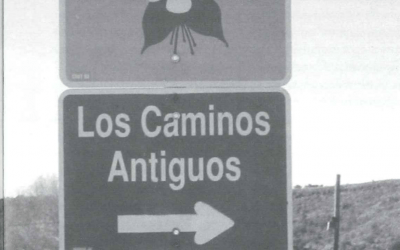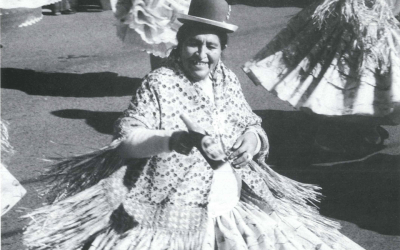Food and Culture: A New Sustainable Tourism Product

An elegant German style hotel in souther Brazil; German style beer in Valvidia. Photos from the collection of Regina G Schüter.
More than a hundred years ago, waves of immigrants arrived in South America. Many of these were to settle in the countries that today make up the MERCOSUR (Brazil, Argentina, Uruguay and Paraguay) and in the south of Chile. Germans and Italians, Poles and Ukrainians, Croats and Portuguese, Armenians and Welsh are just some of the ethnic groups who arrived to the new world full of hope, but also apprehensive about what lay ahead.
As immigrants transitioned into a new way of life, many nevertheless preserved their ethnic cuisines. But they also adopted the culinary tradition of their new country. In the Argentine case, for example, the famous “asado” (Argentine barbecue) and the yerba mate infusion was—and continues to be—a staple of any diet, immigrant or local. However, homeland cuisine was seen as both a means of cultural affirmation and a contribution to the enrichment of local customs.
Now, these old immigrant trails have become specific culinary routes in Latin America’s Southern Cone. Such routes, found predominantly in rural settings, highlight places where the gastronomy has unique and fascinating characteristics. They, in fact, act as instruments with which to rescue the culture and history of the inhabitants themselves. From an economic point of view, they allow for the exploitation of a great range of resources and at the same time they reduce marketing costs. The idea received a considerable boost when UNESCO recognized gastronomy as an intrinsic part of cultural heritage in the 90s.
With the passing of time, many of immigrant customs such as architectural styles became obsolescent, a phenomenon that did not occur vis-à-vis typical culinary dishes, rites, and customs, as the new gastronomic trails attest.
Yet remaining architecture often can be glimpsed along the culinary trails. For example, Germans of the Volga built entrances designed to deal with the snow in their new dwellings on the warm shores of the Paraná River, and Fins incongruously built saunas even in the tropical jungle.
The Germans and Swiss colonists in Argentina’s southern-most Patagonia region successfully promote tourism by recreating natural settings strikingly similar to those found in Europe. The small Andean resort of “San Carlos de Bariloche,” for example, was baptized “The Argentine Switzerland.” Patagonia’s eclectic cuisine also distinguishes it from the rest of Argentina. However, this was later seen as a misnomer by visiting members of the British Royal Family who, travelling in this region at the beginning of the twentieth century, found its rugged terrain more evocative of the Canadian West. Patagonia still offers the classic “Patagonian Lamb” barbecue, one of the region’s best-known delicacies. However, many of the region’s European-origin dishes are now increasingly popular. Produced by the descendants of the original colonists, smoked trout, stag and wild boar pates, and other exotic delicacies can be found both in restaurants and wrapped in souvenir shops. These products have also found their place in supermarkets across Argentina, since local tourists, once in their hometowns, still desire to symbolically revisit the places they have toured by consuming those exotic delicacies. The jams and preserves produced in Patagonia from the infinite varieties of local berries and the mouth-watering assortments of chocolates and cakes are among the delicacies that beckon tourists to the region. While the controversy as to whether the raspberry originally came from Europe or America rages on, berry cultivation intensifies. Developing from a tourist proposal, this region has become Argentina’s main berry producer, thus generating benefits to the original colonists, as well as to newcomers.
The Welsh adopted the concept of reflecting a culture through gastronomy par excellence. They settled on the shores of the Chubut River, near Patagonia’s Atlantic coast. When the first contingent of tourists visited to view different species of marine fauna such as whales, penguins, sea elephants, and lions, they were amazed to find a plethora of small villages whose residents still maintained the language and customs imported from Wales more than 100 years before. It was not long before the descendants of those who had arrived in the small ship “Mimosa,” the local version of the North American “Mayflower,” started to open their houses to the public, and in these the “classic” Welsh tea was served. The enterprising housewives, now transformed into successful businesswomen, started to invent recipes for cakes that were to delight visiting tourists, mostly from Argentina itself. Over the course of time, they came to produce their very own cake, later generally known as “Welsh cake,” always on offer at tourist fairs. Although ironically unknown in Wales, this kind of Christmas cake symbolizes the effort and dedication applied by the immigrants with regard to the region where they had settled.
Like the Welsh, the Germans were to make their presence felt by inventing recipes for cakes. However, they achieved considerable success by popularizing a drink widely accepted all over the world—beer. Thus, the southern Chilean city of Valdivia did not waste any time in showing aspects of German colonization through its beer museum. This tourist attraction, in fact, functions in a bar whose restaurant offers typical dishes; here, it is considered almost an affront to German culture to accompany this cuisine with wine. Also in the bar is a souvenir shop whose products have the inscription “das gute Bier (the good beer)-Valdivia” always appears.
The same phenomenon can be observed in the south of Brazil. In Blumenau the annual Oktoberfest has met such success that it has been extended to other localities in the south of the country. One of the greatest tourist attractions in the region, the Oktoberfest is as popular with Brazilians and Argentines during the summer as the nearby beaches of the Atlantic coast. While these cultural manifestations still attract many visitors, it was in the heyday of rural tourism that they had their greatest possibility for growth.
The Italians too made their mark in both Argentina and the south of Brazil, To this day, the rivalry between the two nations is not only limited to soccer but extends to the claim to the world’s best pizza, arguably better even than that prepared in Italy.
Both domestic and international tourists often consciously followed a cuisine trail on their holidays, as they seek to explore the attractions of different local gastronomies, in different regions.
More formal organized routes, as are being developed now, can stimulate tourism and focus on a product or a characteristic cultural feature. The first possibility for such a route would promote the consumption of popular products found extensively in the region. Thus, the stimulation of abundant products such as apples, wine, and fresh fruit enhances the development of a rural area by giving the value-added component of tourism to the product itself. With this in mind, in 2000, Argentina created the National Plan of Rural Tourism, involving the Ministry of Agriculture, Livestock and Fishing and the Ministry of Tourism. Many of these routes have now been developed. Today, the wine route is the most popular. It links the different provinces with the most important wine cellars in the country. Although the first colonists originally started wine cellars, the efforts of immigrants—mostly Italian settlers—made them successful. The tourists do not only come to sample wine. With the Andes mountain range as a background, and ringed by an immense desert watered by the mountains’ thaws, the intense green of the vineyards offer unforgettable scenery. Aristocratic wine-growers’ residences, built in a spectrum of styles and offering a comprehensive range of hospitality, attract an ever-growing number of visitors seeking to combine culture and nature.
In Brazil a number of different cultural routes have already been designed. These routes, which seek to promote rural development, enshrine gastronomy. A case in point is the Italian Route, which enables tourists to acquaint themselves with the customs and traditions of the fist Italian settlers who arrived here around the end of the 19th century. In addition to the presentation of typical dishes, attention is also paid to wine, the thematic axis of which is the grape. These routes are, in turn, effective in uniting touristically the MERCOSUR countries and also Chile. Two classic examples of gastronomic trails which are ethnic in nature yet transcend national borders are the following: the German trail which starts in Curitiba (Southern Brazil), traverses much of Argentina and finishes in Puerto Varas (Southern Chile); and the Italian trail which starts in the Brazilian state of Parana and ends in the deep south of Argentina’s Patagonia. At the time of writing, these trails, potentially so attractive to visiting gourmets, have yet to be fully developed by the tourism industry.
Winter 2002, Volume I, Number 2
Related Articles
Editor’s Letter: Tourism
Ellen Schneider’s description of Sandinista leader Daniel Ortega in her provocative article on Nicaraguan democracy sent me scurrying to my oversized scrapbooks of newspaper articles. I wanted to show her that rather than being perceived as a caudillo
Recreating Chican@ Enclaves
Centrally located between southern Colorado and northern New Mexico, is a hundred-mile long by seventy-mile wide intermountain basin known as the San Luis Valley. Surrounded on the east …
Tourist Photography’s Fictional Conquest
Recently, while walking across the Harvard campus, I was stopped by two tourists with a camera. They asked me if I would take a picture of them beside the words “HARVARD LAW SCHOOL,” …




